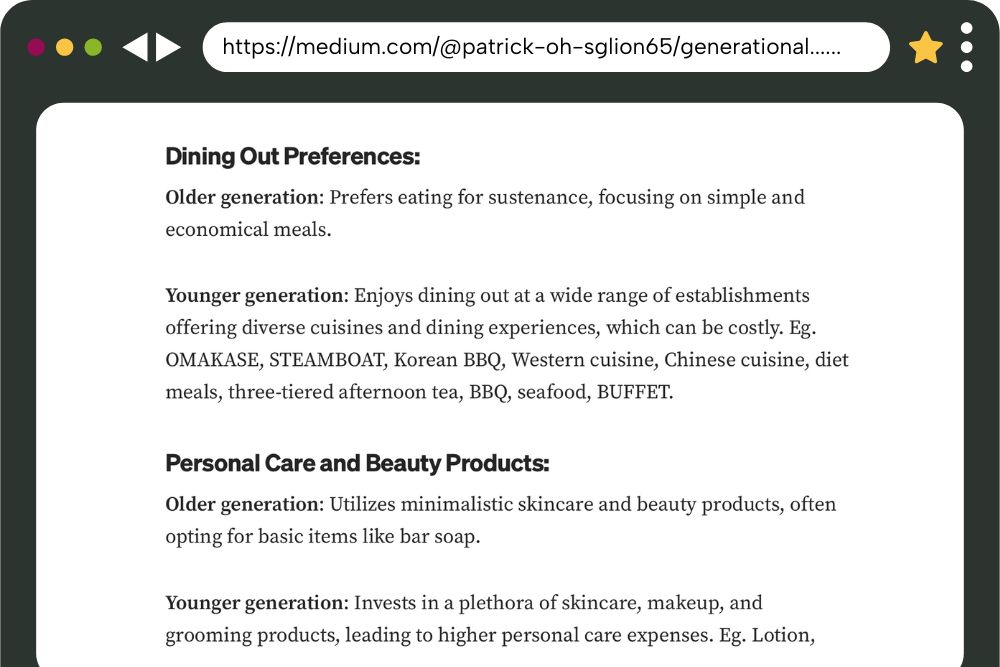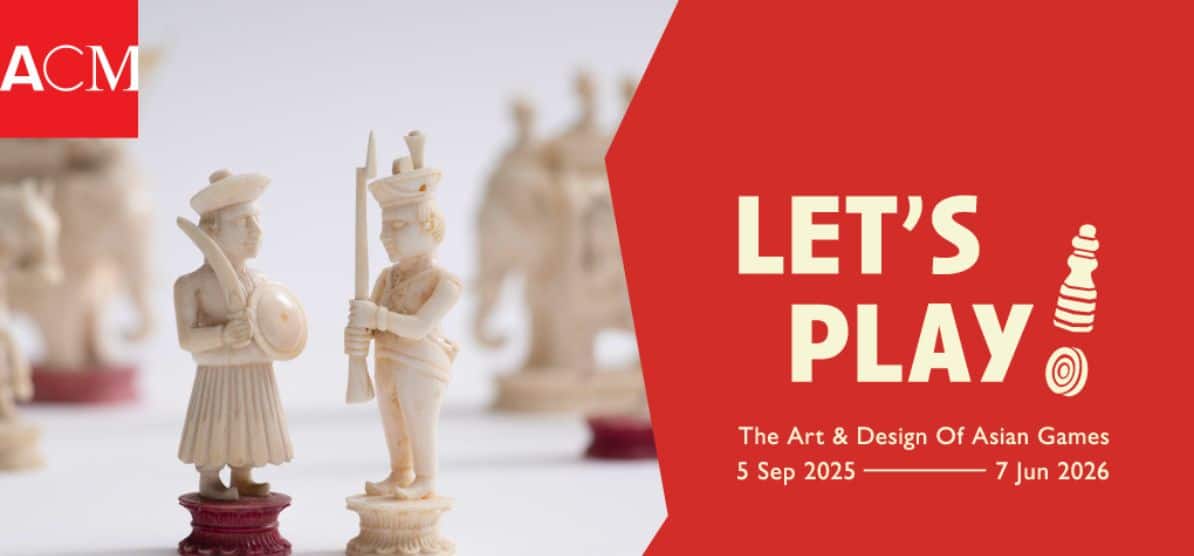
Dear silvers,
The festive season is upon us once again, and you know what that means: Christmas jingles at every shopping mall, supermarket and restaurant, on repeat until it’s time to switch it up to the drums of the Lunar New Year.
It has been nearly a month of endless Christmas cheer and Mariah Carey ballads, but you can always head to the Lim household for an altogether novel Yuletide refrain.
Wah, so expensive!
says my mum, every so often and with a distinct lack of melodious Christmas joy as she flips through the festive brochures she's picked up at the local FairPrice.
To be honest, you can come back on any given day of the year to hear that particular utterance since she dishes it out freely and without prejudice for just about anything. As her son, I’ve been hearing, “Wah, so expensive!” since the moment my toddler brain developed to comprehend human speech, all the way through childhood, and even now, as a working adult.
Advertisement
Though I consider myself financially responsible (some of my friends prefer stingy), I’ve heard it used in reference to a broad spectrum of spending choices. Everything from dining out at good restaurants and overseas trips to gym memberships, pet ownership and online shopping gets rigorously scrutinised by the dreaded “Wah!”.
Going broke on avocado toast

These one-word accusations of financial imprudence are not unique to my mum and me. In fact, they’re a bugbear for the entire millennial generation.
The overarching sentiment about the difference between our generations’ spending choices is probably best summed up by the now-infamous quote from Australian millionaire Tim Gurner on the subject of purchasing one’s own home.
When I was trying to buy my first home, I wasn’t buying smashed avocado for $19 and four coffees at $4 each. We’re at a point now where the expectations of younger people are very, very high. They want to eat out every day; they want travel to Europe every year.
He said,
There’s a very clear thesis here: The younger generation wants more than the older generation, and they’re often spending money irresponsibly to get it. It’s an attitude that is reflected around the world – Singapore included. Just look at this blog post by a random Singaporean author I found when doing research for this article.
More open to spending
To some extent, what he says is true: Many people in my generation are now more willing to spend money pursuing their interests, indulging in creature comforts and yes, on avocado toast and Starbuck lattes too.

Tan Jia Ying, a 26-year-old educator, says that around 20 to 30% of her monthly expenditure goes to food, with visits to cafes and restaurants “about one to two times weekly”.
However, she occasionally allocates up to 40% of her spending on gaming.
The months with large gaming expenses are because I fall into the gachapon trap and end up spending more in games to beat the odds and obtain an item,
she says, referring to the loot or mystery box system in videogames which rewards players with random items of varying rarities.
Not advisable and not recommended, but where else in the world will you be able to spend money to literally buy happiness?
she explains.
Apart from gaming, Jia Ying puts about a tenth of her spending into a hobby she’s more recently picked up – slime-making, a pliable slime-like substance decorated with colours, beads and other items and collected by enthusiasts.
The damages to the wallet are pretty big because slimes are heavy, which makes shipping them to Singapore expensive,
she explains.
"But these slimes are soul-nourishing and fun to play with as a fidget toy."
Tan Jun Jiu (no relation to Jia Ying) is also willing to part with a substantial portion of his money on non-essential expenses.
Though the 29-year-old who works in the supply chain industry only rarely goes to pricier eateries – where he estimates he’ll spend about $30 to $40 a meal – his daily food expenditure remains high, seeing as how he’s currently on a meal plan subscription which costs him about $18 a pop.
My attitude towards money has shifted over the years. Five years ago, as a fresh graduate, I was thriftier and spending more than $20 per meal would make me think twice. However, I've embraced self-care more over the years, and am now more open to spending more for good-quality food,
he says.
The rest of his monthly expenditure goes into a fund for travel, which Jun Jiu sees as a way of “completing items on [his] bucket list”. Most recently, he ticked off skydiving on a trip to Switzerland, even though it cost him almost $1,000 for a ten-minute experience.
It's unlikely that I'll be coming back for many years, if ever. So I decided to just go for it,
he says.
Even Caitlyn Park, a 26-year-old video editor who considers herself “on the thriftier side”, is willing to allocate $40 a month to specialty coffee beans. She also spends $100 a month on a gym membership and a subscription for a workout app, seeing both as health investments for the future.

Indeed, both Terence and Jun Jiu also spend a similar amount monthly on fitness pursuits. The former has a membership at an international chain gym, which gives members access to its gyms overseas. Terence finds this gym membership suitable for his lifestyle and allows him to exercise even when travelling.
Although it's a significant amount of money, I figure that I'll be saving money in terms of medical costs in the future,
he elaborates.
Jun Jiu, on the other hand, has a monthly membership at a rock-climbing gym which is subsidised as part of his company’s benefits.
Even if they weren’t paying for it, I'd still pay and exercise. It's a fun and social way to work the whole body in a way that feels functional as I get older,
he says.
Spending habits result from a different upbringing
Nevertheless, interviewees agreed largely that younger people in general were more willing to spend on comfort and convenience compared to their parents.
This sentiment is supported by an article in our national newspaper, which cited data from market research providers showing that baby boomer households in Singapore spent less on average compared to Gen Z- or millennial-led households.
One possible reason for this disparity, as cited in the article – concerns about an uncertain financial future, both in terms of healthcare costs and staying employed.
Of course, there’s another explanation too.
Many of the things that might seem normal to us were probably luxuries long ago. So it's expected that they'd look at young people eating at restaurants or travelling multiple times a year and think they're overspending.
Terence Khoo, 28, says,
Then again, with budget flights and things like Airbnb (a short-term homestay app), travelling is comparatively much cheaper than before.
The product manager adds,
I try not to nag my children about their spending. We earned money so they could have a better life, and now they have it. I don't fancy the same things as them, because I didn’t grow up with it.
Harry Lim, 70, agrees,
Last time, we would save our allowance for comic books or cassette tapes – where can you even find that now?
adds the retiree.
Caitlyn, the video editor, sees millennials’ spending habits as a symptom of their progress along life’s journey. She tells SilverStreak that her expenses increased significantly after moving out of her parents’ home into a rental flat with her husband, leading her to cut back in other areas of spending.
I'm very privileged to be in a comfortable little spot where I can automatically set aside savings and investments without thinking too much about sudden expenses. But that's because we haven't started paying our mortgage (for a built-to-order flat) and we also don't have any kids or pets yet – so we’ll deal with that when we get there,
she says.
Terence concurs, adding that while some creature comforts have become cheaper, others have ballooned far out of reach.
Cars were once something that our parents could get relatively easily. Nowadays, it costs so much that we basically rule it out for the near future, which ironically frees up some spare spending power,
he says.
It's the same thing for flats, since most couples have to wait quite a few years before owning one. So I think it makes sense that many of us enjoy ourselves in the meantime,
he adds.
Amin Sultan, a 65-year-old technician supervisor, has also noticed this trend among younger relatives – though to the point of financial irresponsibility, in his view.
They spend frivolously on relatively simple things, like food delivery when you can just walk a short distance to buy it instead,
he says.
"I don't really understand why they’d spend more than they earn, because it will be very stressful when something unexpected pops up."
There's a time to spend

Amin’s last point about spending within one’s means is really the crux of this whole discussion.
All of the younger people interviewed for this article were cognisant of financial planning. Every one of them set aside a significant portion of their monthly salary for investments and savings – about 50% for Caitlyn, Jun Jiu and Jia Ying, and a whopping 70% in the case of Terence.
Combine this with the fact that many of the younger generation aren’t frittering their money away on online shopping and avocado toast alone, but investing in their health and skills makes their indulgences, in my book, justified.
(The other half of the millennial and Gen Z population living paycheck-to-paycheck, however, should really be watching what they’re spending on.) But it’s not just financially responsible younger people who deserve to enjoy the things money can buy.
Seniors who’ve sorted out their retirement and healthcare needs should make the most out of their silver years, even if they’ve got to take some money out of their precious fixed deposits.
Naturally, I’m talking to my parents, who are lucky enough to be in a decent financial position for retirement. In my eyes, they often take an outdated and frankly, almost Puritanical stance (not unlike the one in the blog post) to spending in the name of measured Asian frugality.
“Aiya, we don’t know how to appreciate this lah,” says my mum whenever we suggest any place fancier than, say, a family restaurant like Putien – or “No need, I can tahan (Malay for endure)” when it comes to spending a little more for extra comfort.
At some point, you’ve just got to let loose – even if it means spending some of your kids’ inheritance – and enjoy yourselves while you can. In other words, I’m hoping that my mum’s catchphrase will one day morph into “Wah, so fun!” instead.







